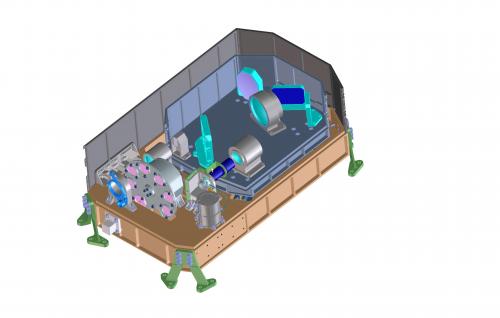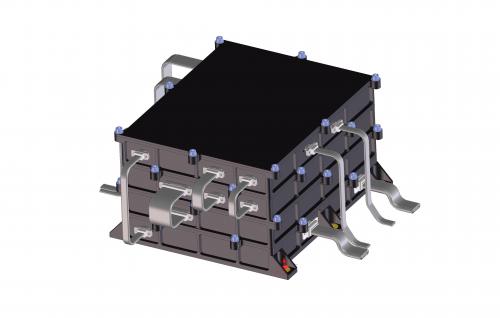The EnVision mission
EnVision is an ESA satellite that will be launched to Venus in November 2031 to study the planet from below the surface to the highest layers of the atmosphere. The aim is to get a holistic view on the history, activity, and climate of our sister planet. One of the instruments on board EnVision is VenSpec-H, an infrared high-resolution spectrometer being developed under the leadership of BIRA-IASB.
During the day, VenSpec-H will perform measurements of the atmosphere above the thick cloud deck. At night, the instrument will look also below the clouds, via the so-called spectral night windows of Venus. It will allow to study a relatively unknown zone of the atmosphere, where a pronounced greenhouse effect dominates the planet.
VenSpec-H will study the composition of the atmosphere, more precisely all gases related to volcanism and to the interaction of the atmosphere with the surface, such as H2O, HDO, OCS, CO, HF, SO2 and HCl. The instrument will orbit the planet on board the EnVision satellite from where it will look down into the atmosphere (nadir observation).
The VenSpec-H instrument
Not only the scientific coordination of Venspec-H is done from within BIRA-IASB. In fact, the complete development of the instrument is lead by the Engineering division of the institute in a vast international collaboration. In the VenSpec-H consortium Belgian, Swiss, German, Spanish, Portuguese and Dutch engineers from several research institutes, universities and industrial partners are present.
The spectrometer part of the VenSpec-H instrument is built around an echelle grating that converts the incoming light into a spectrum. Along with several mirrors and lenses, the grating is situated in the cold section of the instrument at a temperature of -45 °C. This low temperature is necessary to avoid perturbation of the faint infrared signal from Venus by the thermal radiation of the instrument itself.
In the warm section of the instrument, just in front of the spectrometer, there is a filter wheel that allows to select several spectral filters. At the exit of the spectrometer, the spectrum is collected in a detector, that is operated at an even lower temperature (around -135 °C).
Besides the optical bench, VenSpec-H has a detached unit (the E-Box) housing the electronics that control the instrument and read out the detector.
In the past phases of the project, optical, thermal, structural, radiation and performance simulations have been performed to check if the instrument design complies to the scientific requirements and is capable of safely surviving a long space mission.


